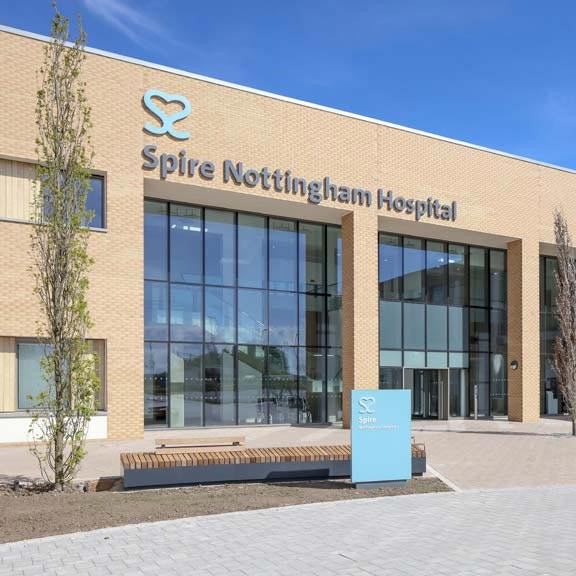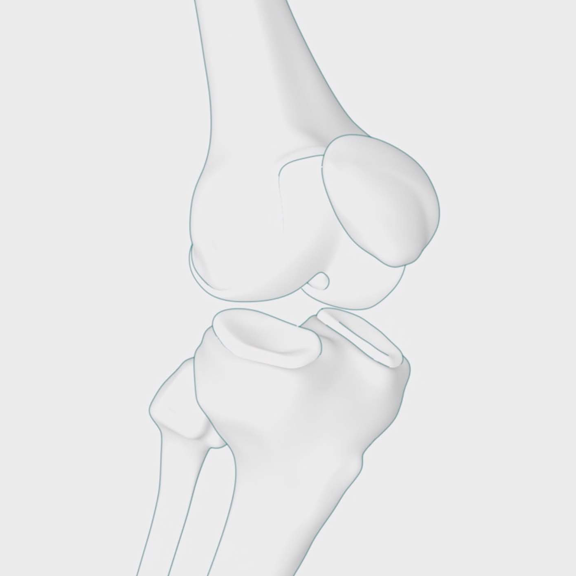Knee arthroscopy surgery
Keyhole surgery allows your doctor to check and treat knee problems.
We offer advanced keyhole surgery for the investigation and treatment of knee pain and joint injuries — this is called knee arthroscopy. Knee arthroscopy can be used to investigate and treat meniscal (meniscus) tears, anterior cruciate ligament (ACL) tears, cartilage damage, ligament damage and osteoarthritis.
Sometimes also called
- Meniscal tear surgery
- Cruciate ligament surgery
At a glance
-
Typical hospital stay
Same-day discharge or one night -
Procedure duration
30 minutes to two hours -
Type of anaesthetic
General, spinal or local -
Available to self-pay?
Yes -
Covered by health insurance?
Yes
Why Spire?
- Fast access to treatment when you need it
- Internationally and nationally renowned consultants
- Clear, inclusive pricing
- 98% of our patients are likely to recommend us to their family and friends
View this treatment at your local spire Spire Hospital
- Local pricing
- Consultants near you
- Payment options
- Local pricing
- Consultants near you
- Payment options
What is knee arthroscopy?
Your doctor may suggest an arthroscopy if you have the following problems that can’t be diagnosed using a scan or X-ray:
- Baker's cyst
- Difficulty moving your knee, especially if this restricts everyday activities and affects your quality of life
- Knee injury
- Inflammation
- Severe pain or knee pain that hasn’t been relieved with non-surgical treatments
- Stiffness or swelling
Knee arthroscopy is often used to:
- Assess damage caused by a sports injury or wear and tear due to osteoarthritis
- Drain excess fluid from around your knee joint
- Investigate abnormalities in the synovium ie the tissue lining the inside of your joints
- Remove tissue — this includes:
- Removing a Baker’s cyst
- Removing fragments of loose bone or cartilage
- Trimming damaged articular cartilage
- Repair damaged ligaments (anterior and posterior) or torn meniscal cartilage
- Treat knee conditions — this includes:
- A severe knee infection (knee sepsis)
- Knee arthritis — for osteoarthritis, knee arthroscopy is usually only recommended if non-surgical treatments haven’t worked and/or your knee gives way or locks up
- Patella (kneecap) problems eg to reposition the patella
Knee arthroscopy may also be used to collect tissue (biopsy) for analysis in a lab.
The benefits of knee arthroscopy when compared to conventional open knee surgery include:
- Faster wound healing
- Less pain after the operation
- Likely to go home on the same day of your operation
- Lower risk of complications, such as infection
- Quicker recovery time
These benefits are due to the smaller cuts needed for knee arthroscopy, which uses smaller surgical tools.
Find your nearest Spire hospital
Almost all our hospitals offer private knee arthroscopy and have teams of orthopaedic (bone and muscle) surgeons who specialise in this procedure.

Events
Free mini consultations for Cosmetic surgery
Book a Free mini consultations with our leading Cosmetic experts
Learn more
Free mini consultations for Cosmetic surgery
Book a Free mini consultations with our leading Cosmetic experts
Learn more
Allergic Eye Disease
Join Spire Murrayfield Hospital (Wirral) and Consultant Ophthalmic Surgeon - Tara Lane for an evening of education on Allergic Eye Disease.
Learn more
How knee arthroscopy works
Your knee joint is made up of three bones: your kneecap (patella), shinbone (tibia) and thigh bone (femur).
The back of your patella and the ends of your shinbone and thigh bone are covered in a flexible tissue called articular cartilage, which helps your knee joint move smoothly when you bend and extend it. Two C-shaped pieces of tough tissue called meniscal cartilage sit between your shinbone and thigh bone, acting as shock absorbers and stabilising your knee joint.
Your knee joint is also encased in a thin lining called the synovium, which produces synovial fluid to lubricate the cartilage in your joint and therefore reduce friction when you move it.
The bones in your knee joint are connected to each other by four ligaments that help stabilise your knee joint.
Knee arthroscopy surgery
Surgery is usually carried out under a general anaesthetic where you’re unconscious. Sometimes you may have a spinal or epidural anaesthetic, where you’re either sedated or awake but can’t feel anything below your waist.
Once your anaesthetic has taken effect, your orthopaedic surgeon will:
- Clean the skin over your knee and cover the area with surgical dressing, leaving just the area where the cuts will be made exposed
- Place a positioning device onto your knee to stabilise it, if needed
- Make one or more small cuts
- Insert sterile fluid into your knee to rinse out any cloudy fluid and expand your joint, if needed, so it’s easier to view
- Pass the arthroscope into your knee joint — the image from the camera will be viewed on a screen so the joint can be examined closely and your surgeon can make a diagnosis
- Repair any torn cartilage or damaged knee ligaments, or remove any loose bone fragments or scar tissue, using small surgical instruments inserted through other small cuts. Fragments are sometimes flushed out with sterile fluid
- Take samples from the lining of your knee joint if there is any inflammation present
- Drain away any fluid that’s built up in your knee due to injury or arthritis, along with any fluid injected during the procedure
- Remove the arthroscope, stitch or tape the cuts and then apply a sterile dressing over the wound
You will then be taken to a recovery ward.
After your procedure
Either on the same day or in a follow-up appointment, your consultant will explain to you what’s been found and whether any other treatment is recommended. They will also tell you which activities you should avoid and may also recommend physiotherapy to strengthen your knee muscles and help your recovery.
What are the alternatives to knee arthroscopy surgery?
In some cases, your doctor may be able to diagnose your knee problem without a knee arthroscopy. A physical examination of your knee and/or an X-ray or MRI scan may be enough to reach a diagnosis. Based on your diagnosis, medications and physiotherapy may be enough to treat your condition.
Knee arthroscopy surgery
Watch how a knee arthroscopy surgery takes place
View transcript of this video
This video explains what happens during knee arthroscopy surgery. Arthroscopy is a type of keyhole surgery to investigate and sometimes treat knee problems such as sport injuries or the removal of bone fragments. The knee joint is made up of three bones, the femur, also called the thigh bone.
The tibia or shin bone, and the patella or kneecap.
We will look at how keyhole surgery is used to remove bone fragment. The surgery is carried out under a general anaesthetic or an epidural injection where you're awake, but can't feel anything below the waist. The orthopaedic surgeon will make small cuts in the skin around the knee.
Sterile fluid is inserted into the knee to expand the joint enabling a better view of the area. Next, the arthroscope, a metal instrument with a tiny camera will be inserted into the joint for closer examination. To remove any loose bone fragments or scar tissue, a small surgical instrument is inserted through other small incisions.
Once the bone fragment is removed, the surgeon will remove the camera and drain away any fluid that's built up in the knee, due to injury or arthritis, along with any fluid injected during the procedure.
They'll then close the incisions with stitches or staples and the area will be bandaged before moving the patient to recovery. Depending on the complexity of the surgery a knee arthroscopy can take between 30 minutes and 2 hours.
The consultant will explain what's been found and whether any other treatment is recommended. Although there's generally less pain after an arthroscopy than with traditional surgery, you're likely to feel discomfort once the anaesthetic wears off. Most people go home on the same day or the following day and the consultant will advise you on the type of activities to avoid.
Physiotherapy is also recommended to help strengthen the muscles around your knee, to aid recovery. For more information contact your local Spire Hospital or visit the Spire Healthcare website.
What to expect during knee arthroscopy surgery
Who will be involved?
As well as your orthopaedic surgeon, you’ll also be seen by:
- An anaesthetist to administer anaesthetic during the operation
- A physiotherapist to help you with your recovery
Preparing for your knee arthroscopy
You may be asked to attend a pre-admission consultation before your operation — this is usually an outpatient appointment.
Your doctor will ask you about any medications (over-the-counter or prescription) or supplements you’re taking. You may need to stop taking certain medications (eg aspirin and ibuprofen) or supplements for a few days or weeks running up to your operation. You will also need to stop smoking as this increases your risk of complications, such as infection.
Your doctor may also carry out tests, such as blood tests and/or an electrocardiogram (ECG), to assess your fitness for the operation. If you have certain health risks, further tests may be needed.
During this appointment, you’ll also be given some helpful information including:
- Advice on what to eat and drink on the day of your arthroscopy — you may need to fast for six hours before your procedure depending on the anaesthetic you’ll have
- How long you can expect to make a full recovery
- What medication, if any, should you start or stop before your procedure
- What to expect after your knee arthroscopy
Your consultant will also discuss the associated risks with surgery and answer any questions you may have about your procedure. After this, you’ll need to sign a consent form to confirm that you’re happy to have the arthroscopy.
How long does a knee arthroscopy take?
From 30 minutes to two hours, depending on what’s found.
Anaesthetic choices
Your surgery may be carried out using:
- Local anaesthetic — where you can’t feel your knee; it is given as an injection into your knee
- General anaesthetic — where you’re unconscious; it is either given as a gas that you’ll breathe in through a mask or a liquid, which is injected into your vein
- Spinal (epidural) anaesthetic — where you’re awake but can't feel anything below your waist; it is given as an injection through your back
If your treatment is performed under spinal or local anaesthetic, you should be able to go home on the same day as your procedure, as the effects of these types of anaesthesia wear off quite quickly. However, you may need to stay in hospital for a few days to allow you to recover.
If your treatment is performed under general anaesthetic, you’re more likely to need to stay in hospital for a day. It can take up to two days to recover fully from general anaesthetic. You’ll therefore be advised to avoid drinking alcohol, operating machinery and signing legal documents for 24-48 hours.
Your consultant will recommend the best anaesthesia option for you, taking into account your wishes.
Pain after knee arthroscopy
Although there’s less pain after an arthroscopy than with traditional surgery, you’re likely to feel discomfort once the anaesthetic wears off. Everyone experiences pain differently and how long it lasts will also depend on whether you had any treatment during the procedure. You’ll be given painkillers to help you manage your pain.
Pain relief medications that you may be prescribed include opioids, non-steroidal anti-inflammatory drugs (NSAIDs) and local anaesthetics. Your doctor may recommend a combination of these to avoid or minimise the amount of opioids needed.
Your hospital stay
Most people go home on the same day or the following day. Before leaving, you may be advised to see a physiotherapist who will give you some exercises to do at home to help with your recovery.
Q & A
Jeremy Jarratt, Consultant Orthopaedic Surgeon
Talking about knee arthroscopy surgery
View transcript of this video
What is knee arthroscopy?
Knee arthroscopy is really keyhole surgery to have a look inside the knee and deal with any abnormalities that are found, often that’s a cartilage tear.
How is the procedure performed?
It’s minimally invasive, it’s done through two or three very small cuts. It’s done as a day case so you’re in hospital and out the same day, and it’s a very short general anaesthetic, so the recovery is often quicker.
Who is suitable for knee arthroscopy?
Most patients are suitable for it. It depends on the condition of the knee, but if it is something that is treatable by arthroscopic surgery, then most patients are suitable – and it's particularly good for those who’ve got significant medical problems as well, because it is a relatively small procedure.
How long does it take to recover from knee arthroscopy?
The recovery from arthroscopy is variable but if it is a simple procedure, most patients will have made almost a complete recovery within three weeks. Some patients take a little longer and sometimes maximum recovery can take up to six weeks.
Is knee arthroscopy successful?
Arthroscopic surgery is very successful. It is very important to do the right procedure on the right patient and that comes down to patient selection and having the discussion with the patient about what their condition is and what we can do for them. But then after that, it’s really down to them to follow the advice of the physiotherapists and engage with their rehabilitation afterwards, and most patients who have arthroscopic surgery for the right condition do exceptionally well.
Recovering from knee arthroscopy surgery
As with most keyhole surgery, recovery from a knee arthroscopy will be quicker than with traditional knee surgery. However, the speed at which this happens will depend on the cause of your knee problems and if you had any treatment during the procedure.
Also, if you have an ongoing knee disease or injury needing further treatment, your recovery may take longer than it would otherwise.
It’s normal to experience the following in the days and sometimes weeks after an arthroscopy:
- Bruising
- Discomfort
- Stiffness
- Swelling
You can expect to return home the same day or the day after your arthroscopy. Once home, you should elevate your leg regularly and apply ice to your knee to reduce the risk of swelling and pain — follow the instructions provided by your doctor and do not put ice directly on your skin, instead wrap it in a tea towel.
The dressings around your knee should also be kept clean and dry for up to two days, so it’s recommended that you shower with a bag over your knee. You may want to wear loose, comfortable clothing so you can dress easily.
Your doctor will prescribe pain relief medication to reduce your pain and may also prescribe aspirin to reduce the risk of blood clots.
If your arthroscopy was delivered under general anaesthetic, you may find that your memory, concentration and reflexes change for a day or two. You should have someone stay with you for the first 24 hours after your operation, and you’re advised to avoid drinking alcohol and signing any legal documentation for two days.
You will need to attend a follow-up appointment a few weeks after your arthroscopy to check on your recovery. During this appointment, you can ask your doctor any questions you still have.
Your lifestyle after treatment
You may need to spend a night in hospital to recover and you may be given crutches to help you get around until the pain and swelling have reduced. You may also be given compression bandages or specialist pump machines to help improve your blood flow through your knee. Your surgeon will tell you when you can start putting weight on your foot and leg again.
Depending on your job, you may be able to return to work after one or two weeks eg if you have a desk-based job. However, if your work involves a lot of physical work, you may need to wait up to six weeks.
You can expect to drive again after two weeks, though you’ll need to have recovered from your operation and be free of distracting pain or sedative side effects from painkillers.
It’s also advisable to speak with your motor insurance company and check with your doctor first.
You’ll need to exercise safely and avoid strenuous activities or sports for six weeks. However, it’s important to do any exercises your physiotherapist gives you to help strengthen the muscles around your knee, as this will improve your recovery.
You can usually return to most of your usual activities six to eight weeks after your knee arthroscopy. However, this may be longer if you have had ligament reconstruction. Avoid high-impact activities for as long as possible and gradually work your way up to them, starting with low-impact activities.
You should speak to your doctor if you’re travelling by plane a few weeks after of your arthroscopy, as you’ll be at an increased risk of deep vein thrombosis (DVT) — a blood clot in one of the deep veins in your body.
In some cases, your surgeon may advise lifestyle changes to protect your knee joint in the long-term. This may include avoiding high-impact exercises and instead trying gentle cycling, light exercises, swimming and walking. Your surgeon or physiotherapist may provide you with an exercise plan to help you make the adjustment.
Risks and complications of knee arthroscopy surgery
There are fewer risks and complications with a knee arthroscopy than with traditional knee surgery, but all operations carry small risks and your consultant should explain them to you beforehand. The following risks are fortunately not common:
- Accidental damage to cartilage (eg torn meniscal cartilage), nerves, ligaments or other tissue
- Anaesthetic complications eg an allergic reaction or breathing difficulties triggered by the anaesthesia
- Blood clot or deep vein thrombosis (DVT) — you are at greater risk if you are older or if you go on a flight in the first few weeks after your operation
- Excessive bleeding from the wound or inside the joint
- Excessive swelling of the joint
- Infection inside the joint or of the wound — a sign that the wound is infected is fluid leaking from the cut after seven days
You may also develop persistent pain, although as with the other risks, this is uncommon.
You should also seek out medical advice if you start to experience any of the following after your arthroscopy:
- Discharge around the wound
- High temperature
- Numb or tingling sensations
- Redness or swelling
- Severe and/or increasing pain
At Spire Healthcare hospitals, your safety is our top priority. We have high standards of quality control, equipment and cleanliness, and a rigorous system of review and training for our medical teams.
Treatment and recovery timeline
Although everyone's different, most people can expect to leave hospital on the same day or the day after their knee arthroscopy surgery. You’ll be able to return to light exercise and desk-based work after one to two weeks. You may be able to drive again after two weeks but will need to check with your doctor and motor insurance provider.
If your work involves lots of physical activity, you should be able to return after six weeks. At this point, you should also be able to take part in sports again. However, your surgeon may recommend avoiding certain high-impact sports.

Up to one night
You’ll be able to leave hospital
One–two weeks
Return to work and light exercise
Around two weeks
May be able to drive (check with your car insurance company)
Six weeks
Return to heavy work and sports
-
Up to one night
You’ll be able to leave hospital
-
One–two weeks
Return to work and light exercise
-
Around two weeks
May be able to drive (check with your car insurance company)
-
Six weeks
Return to heavy work and sports
Frequently asked questions
How long does knee arthroscopy take?
You can expect your procedure to take anywhere between 30 minutes and two hours, depending on what is found.
When can I start exercising again?
Following your knee arthroscopy, you can expect to return to light exercise after two weeks and may be able to resume playing sports after six weeks.
Is arthroscopic knee surgery painful?
Your arthroscopy will be performed under anaesthetic so you won’t feel any pain during the procedure. However you may experience pain and swelling around your knee as you recover at home, this can be improved by keeping your leg elevated and applying ice wrapped in a tea towel.
Can you walk right after arthroscopic knee surgery?
You’ll unlikely be able to walk without support straightaway. We may give you a crutch to help you get around until the pain and swelling has gone down.
Is knee arthroscopy major surgery?
There are fewer risks and complications with a knee arthroscopy than with traditional open knee surgery. However, all operations carry small risks. Your surgeon will explain these to you before your procedure.
When can I shower after knee arthroscopy?
You can shower once you’re home if you make sure to keep the dressing around your knee dry. This can be done by wrapping your wound in a plastic bag. The dressing must be kept clean and dry for at least two days after your arthroscopy.
How long after knee arthroscopy can I drive?
You may be able to drive after two weeks of recovery. Your surgeon will discuss this with you and it is advised that you talk to your motor insurance company too.
Do you need a catheter for knee surgery?
You may need a catheter for your arthroscopy if it is being performed under general anaesthetic, but not always. You can discuss this with your surgeon before the procedure.
Is arthroscopic knee surgery an outpatient procedure?
Knee arthroscopy can be performed as a day case, where you’re able to go home on the same day.
How long will my knee hurt after knee arthroscopy surgery?
You may experience pain for two to three weeks after surgery. Although, some people have pain for six weeks or more. You will be prescribed painkillers to manage your pain. However, if your pain is severe or gets worse, contact your surgeon.
Is swelling normal after knee arthroscopy surgery?
Yes, swelling is normal after knee arthroscopy surgery. It should reduce after a few days.
What kind of anaesthesia is used for knee arthroscopy surgery?
Knee arthroscopy surgery can be carried out under local, general or spinal anaesthesia. Each type of anaesthesia has different risks and benefits.
Your surgeon will discuss these with you and based on your wishes and particular circumstances will recommend the most appropriate type of anaesthesia for you.
The treatment described on this page may be adapted to meet your individual needs, so it's important to follow your healthcare professional's advice and raise any questions that you may have with them.
Get in touch
Sources
https://www.bmj.com/content/357/bmj.j1982
https://www.spirehealthcare.com/treatments/bones-and-joints/knee-arthroscopy-surgery/
https://www.healthline.com/health/knee-arthroscopy
https://orthoinfo.aaos.org/en/treatment/knee-arthroscopy/
https://www.bupa.co.uk/health-information/knee-clinic/treatment-and-care/knee-arthroscopy


